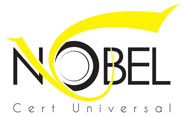ISO/IEC 15149:2011 specifies the physical layer and media access control layer protocols of a wireless network over a magnetic field in a low frequency band (~300 kHz), for wireless communication in harsh environments (i.e. around metal, underwater, underground, etc.).
The physical layer protocol is designed for the following scope:
- low carrier frequency for large magnetic field area and reliable communication in harsh environments;
- simple and robust modulation for a low implementation cost and error performance;
- variable coding and bandwidth for a link adaptation.
The media access control layer protocol is designed for the following scope:
- simple and efficient network topology for low power consumption;
- variable superframe structure for compact and efficient data transmission;
- dynamic address assignment for small packet size and efficient address management.
ISO/IEC 15149:2011 supports several kbps data transmission in a wireless network within a distance of several metres. It can be applied to various services such as the following areas:
- in the environmental industry, to manage pollution levels in soil and water using wireless underground or underwater sensors;
- in the construction industry, to monitor the integrity of buildings and bridges using wireless, inner-corrosion sensors;
- in the consumer-electronics industry, to detect food spoilage in wet, airtight storage areas and to transfer the sensing data from the inside to the outside;
- in the agricultural industry, to manage the moisture level as well as mineral status in soil using buried wireless sensors;
- in the transportation industry, to manage road conditions and traffic information using wireless underground sensors.

